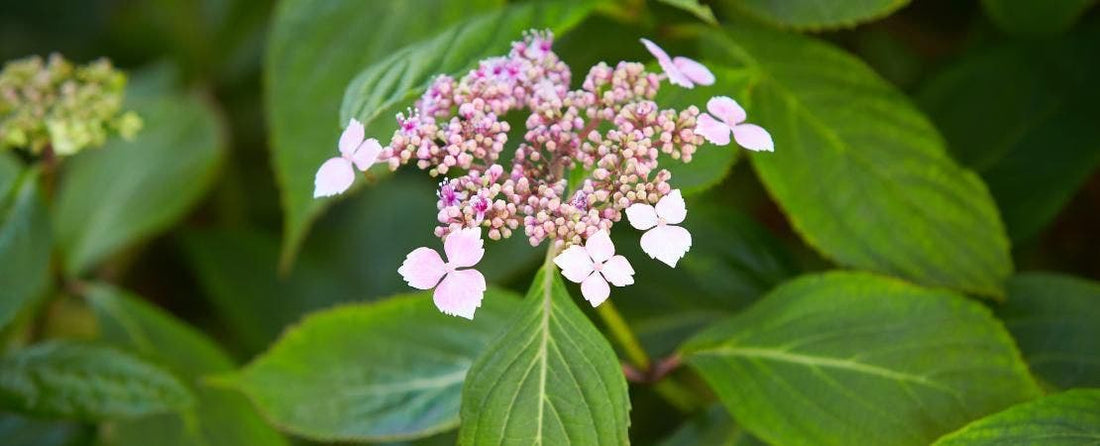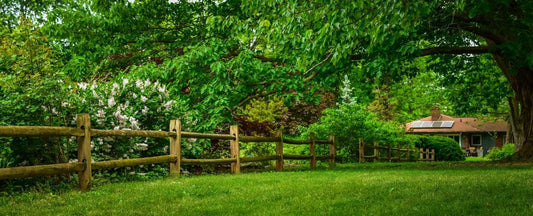All About Growing and Caring for Mountain Hydrangeas

Count on Reliable Blooms from This Under-rated Hydrangea Variety
Mountain hydrangeas, or Hydrangea serrata, are beautiful and reliable flowering shrubs known for their delicate lacecap flowers and compact growth habit. These hardy shrubs are perfect for adding elegance to your garden. Read on to learn how to identify mountain hydrangea bushes and get essential tips and instructions on how to care for and grow them.
Identifying Mountain Hydrangeas
Mountain hydrangeas are similar to the popular lacecap flower form of Hydrangea macrophylla but are typically more compact and hardy. They are native to the mountainous regions of Japan and Korea, which makes them well-suited to cooler climates.
Tips from Jess @YouCanDoItGardening
Key Features for Identification
Flower Shape: Lacecap flower clusters with a center of small fertile flowers surrounded by larger sterile flowers.
Color Variation: Flowers can range from blue to pink, depending on soil pH.
Leaves: Smaller, serrated leaves with a rough texture.
Growth Habit: Generally compact and mounded, making them ideal for small gardens and containers.
Popular Varieties of Mountain Hydrangeas
Mountain hydrangeas come in various cultivars, each offering unique characteristics. Wayside Gardens offers several attractive mountain hydrangea varieties:
Tuff Stuff™ Hydrangea (Hydrangea serrata 'MAK20')
Known for its prolific blooming and hardiness.
Compact growth habit, reaching up to 2-3 feet tall and wide.
Tiny Tuff Stuff™ Hydrangea (Hydrangea serrata 'MAKD')
A dwarf variety perfect for small spaces and containers.
Grows up to 1.5-2 feet tall and wide, with lacecap flowers that can be pink or blue.
Planting Mountain Hydrangeas
Choosing the right location and planting at the optimal time are crucial for the success of your mountain hydrangeas.
Best Planting Time
Plant in early spring or fall when the weather is cooler.
Site Selection
Sunlight: Mountain hydrangeas prefer partial shade to full shade. In cooler climates, they can tolerate more sun, but in warmer regions, provide afternoon shade.
Soil: They thrive in well-drained, fertile soil with a slightly acidic to neutral pH.
Planting Steps
- Prepare the Site: Dig a hole twice as wide and the same depth as the root ball.
- Amend the Soil: Incorporate compost or well-rotted manure to enhance soil fertility and drainage.
- Planting: Place the hydrangea in the hole, ensuring the top of the root ball is level with the surrounding soil. Backfill the hole with soil, pressing gently to remove air pockets.
- Watering: Water thoroughly after planting to help settle the soil.
Caring for Mountain Hydrangeas
Proper care will ensure your mountain hydrangeas remain healthy and vibrant.
Watering
Keep the soil consistently moist, especially during the first year after planting.
Deep watering once a week is preferable to frequent shallow watering.
Fertilizing
Apply a balanced, slow-release fertilizer in early spring to promote healthy growth and blooms.
Pruning
Prune in late winter or early spring to remove any dead or damaged wood and shape the plant.
For mature plants, selectively remove some of the oldest stems to encourage new growth and improve air circulation.
Mulching
Apply a 2-3 inch layer of mulch around the base of the plant to retain moisture and regulate soil temperature.
Common Issues and Solutions
Pests and Diseases
Mountain hydrangeas are relatively resistant to pests and diseases, but they can occasionally be affected by leaf spot or powdery mildew.
Ensure good air circulation and avoid overhead watering to prevent fungal diseases. Treat any infestations with appropriate fungicides or insecticides as needed.
Winter Protection
While hardy in zones 5-9, young plants may benefit from a layer of mulch or straw to protect the roots from extreme cold.
Enhancing Your Garden with Mountain Hydrangeas
Mountain hydrangeas provide year-round interest and can be used in various garden designs. Their delicate flowers and compact growth habit make them a focal point in any landscape.
Landscape Uses
Borders: Their compact size and beautiful blooms make them perfect for adding structure and color to garden borders.
Containers: Compact varieties like Tiny Tuff Stuff™ are excellent choices for container gardening.
Hedges: Smaller varieties can be planted in rows to create low, flowering hedges.
Follow these tips and incorporate mountain hydrangeas into your garden, you'll enjoy their delicate beauty and resilience year after year.





